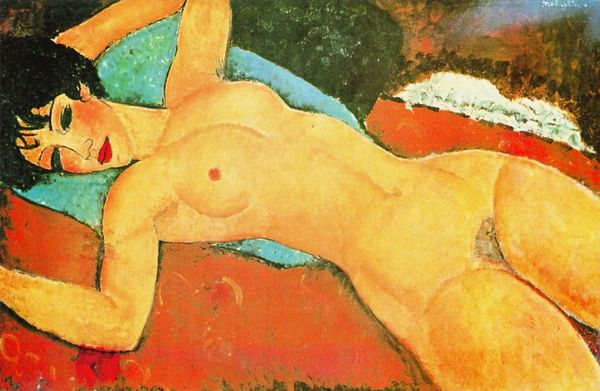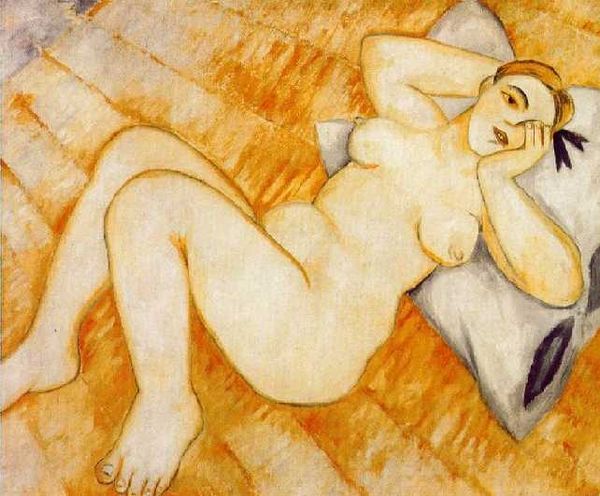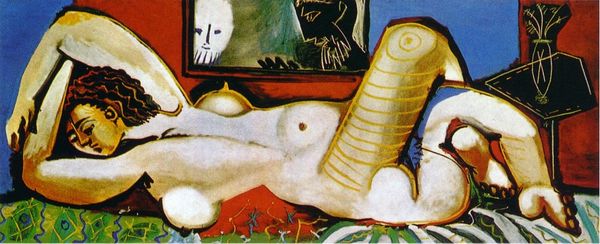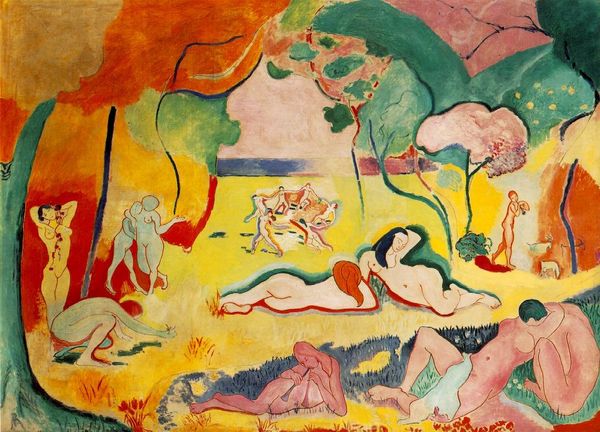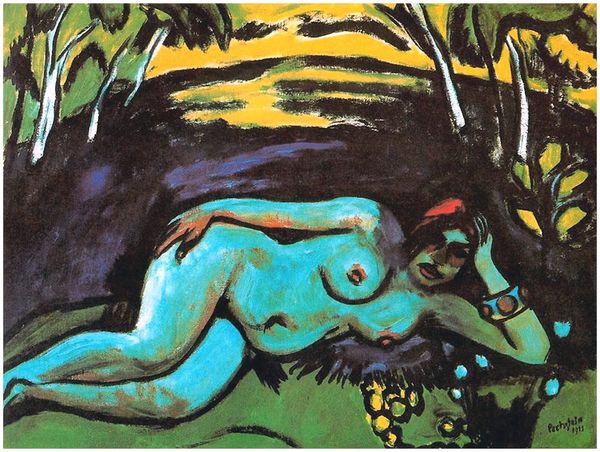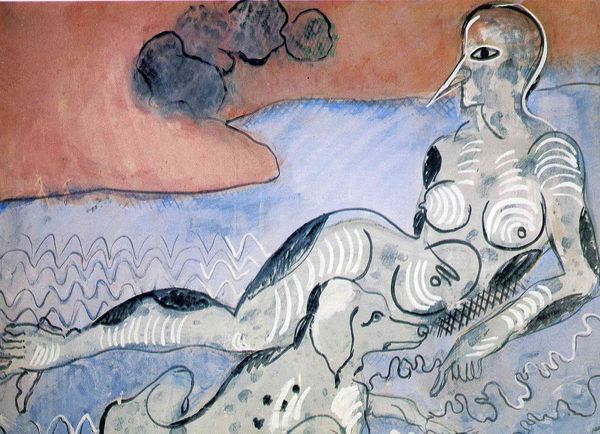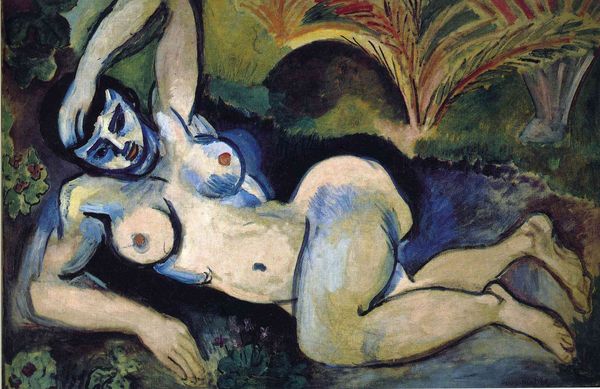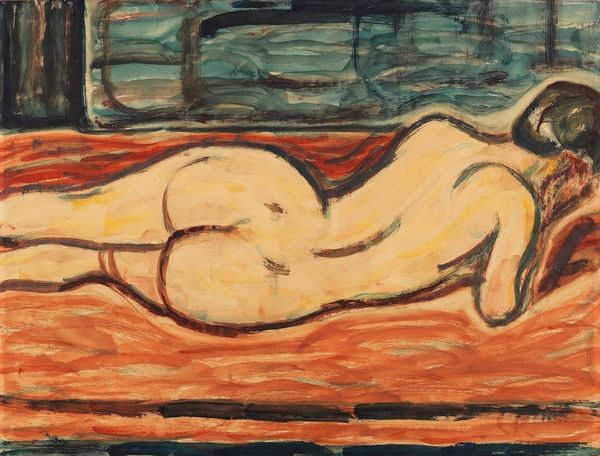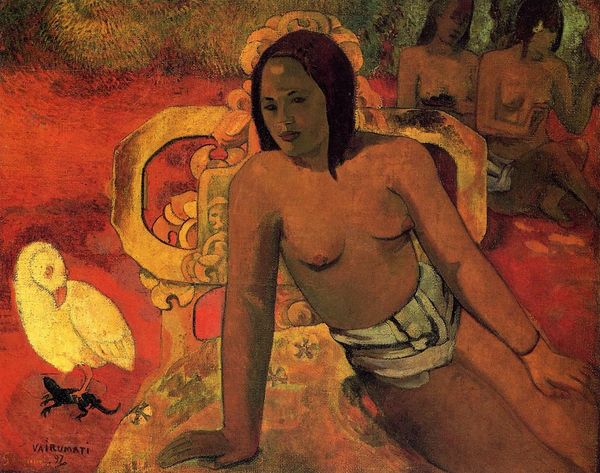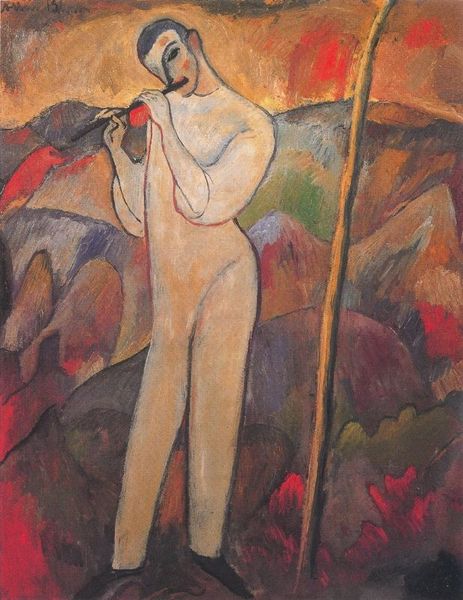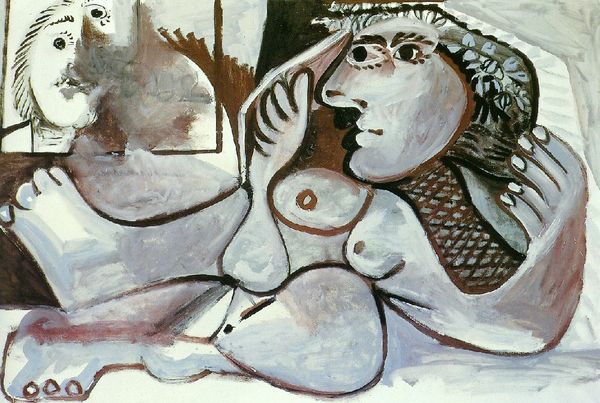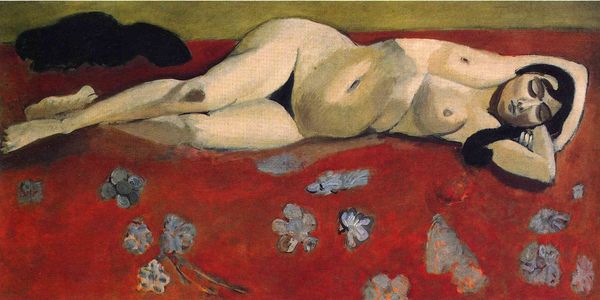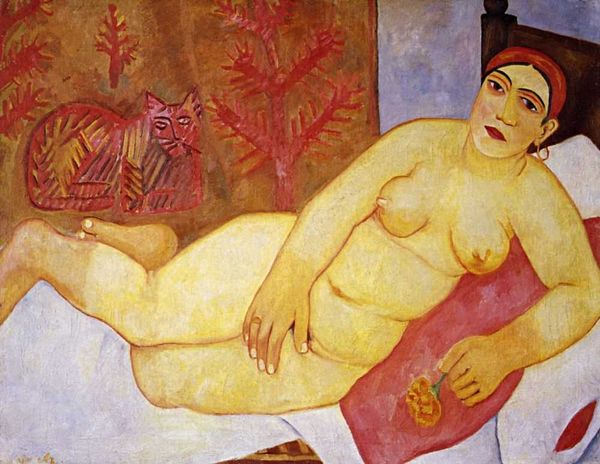
painting, oil-paint
#
portrait
#
painting
#
oil-paint
#
rayonism
#
figuration
#
symbolism
#
russian-avant-garde
#
history-painting
#
nude
Copyright: Public domain US
Editor: Okay, so we're looking at "Venus and Mikhail," an oil painting from 1912 by Mikhail Larionov. It’s… striking. The almost cartoonish figures and the bright colors are hard to ignore. What’s your take on this, considering the context of its time? Curator: I see a radical disruption of traditional representation. The painting, made amidst the Russian avant-garde, challenges the male gaze inherent in traditional Venus depictions. What do you notice about Venus's pose and gaze? Does it conform to the expectations set by, say, Renaissance Venuses? Editor: Not at all. She’s almost confrontational, not passive or idealized. And is that Rayonist style at play here? All those lines shooting out from the figures... Curator: Precisely. Larionov's Rayonism aimed to capture the essence of objects through the rays of light they emit. Here, it could be seen as liberating the figures from conventional form, pushing against established norms of beauty and power dynamics within art. What message do you think the artist is trying to make by painting his wife Natalia Goncharova? Editor: Is he saying she, as both Venus and an artist herself, is actively pushing back against these old traditions? Asserting her own agency and influence? Curator: Exactly! It speaks to a redefinition of beauty and female identity. The juxtaposition of classical mythology with a modern, even somewhat crude, style, suggests a deliberate effort to dismantle established hierarchies and question the very foundations of art historical narratives. It’s a powerful statement on the evolving role of women, both as subjects and creators. Editor: It's interesting to think of this painting not just as a depiction, but as a kind of manifesto. I never would have thought of all this without you spelling it out for me. Thanks so much. Curator: You're very welcome! Art has always been political in nature; it represents the society in which it was created. Keep that in mind during all of your analyses, and you will develop a sharper eye.
Comments
No comments
Be the first to comment and join the conversation on the ultimate creative platform.
